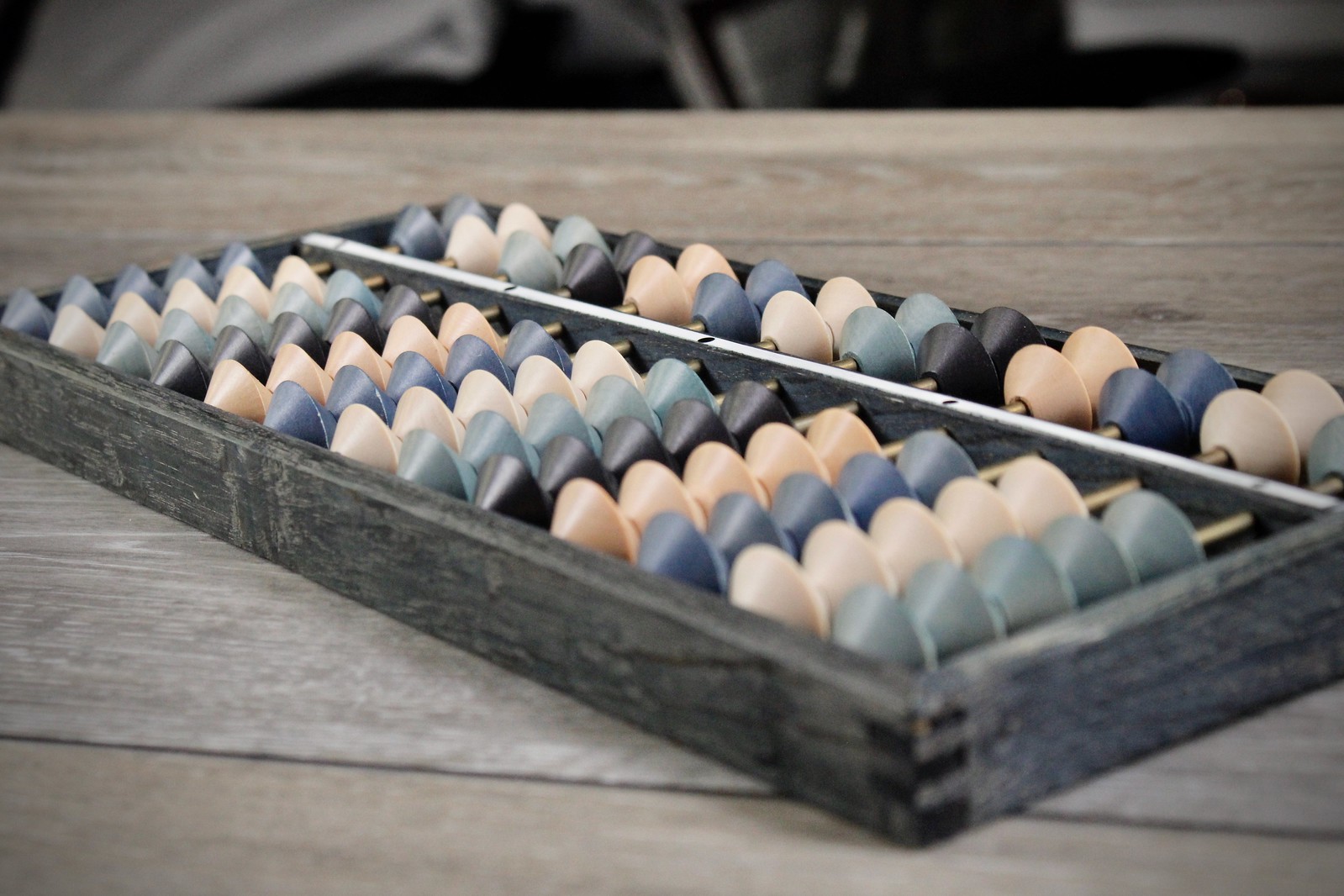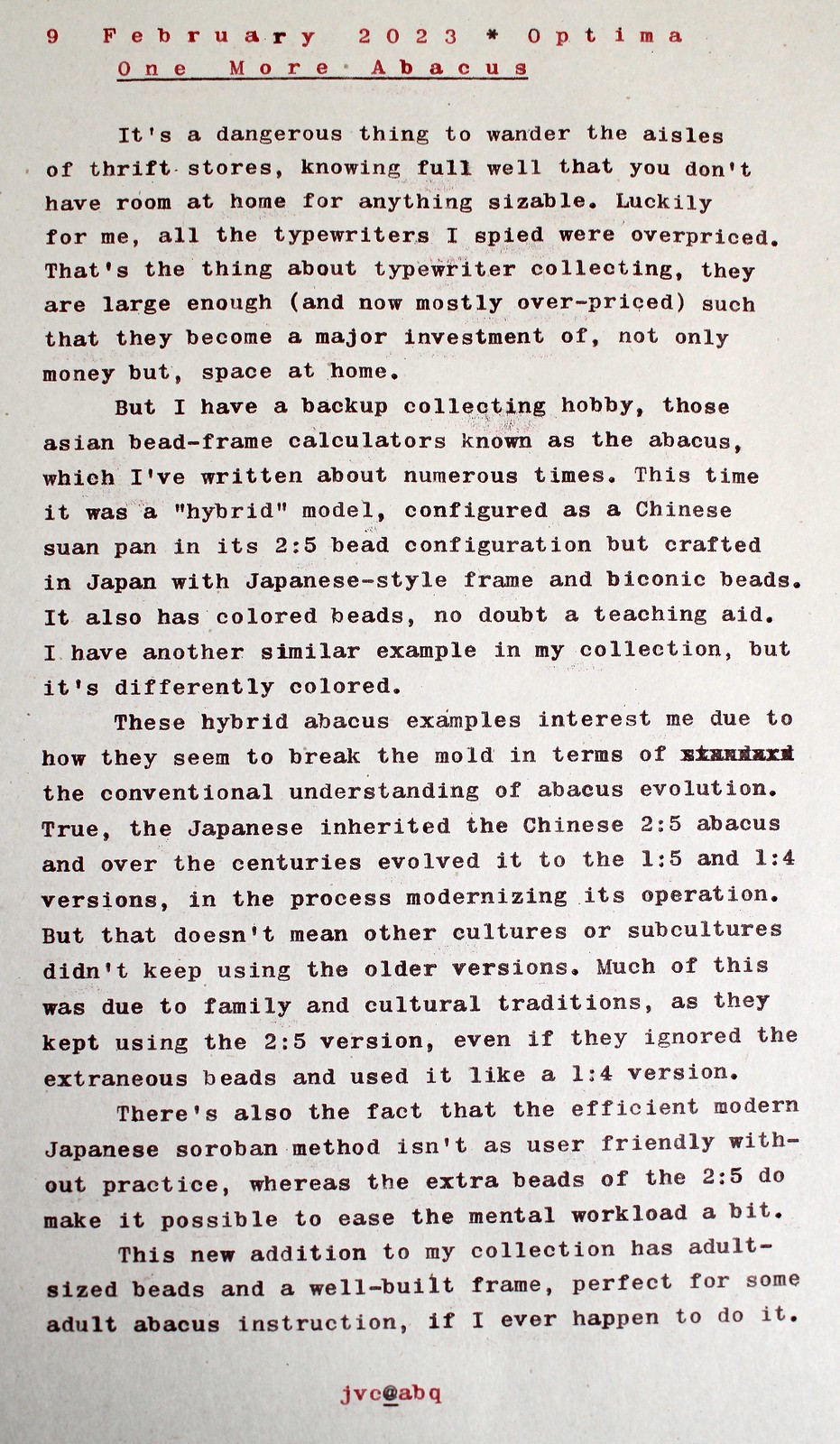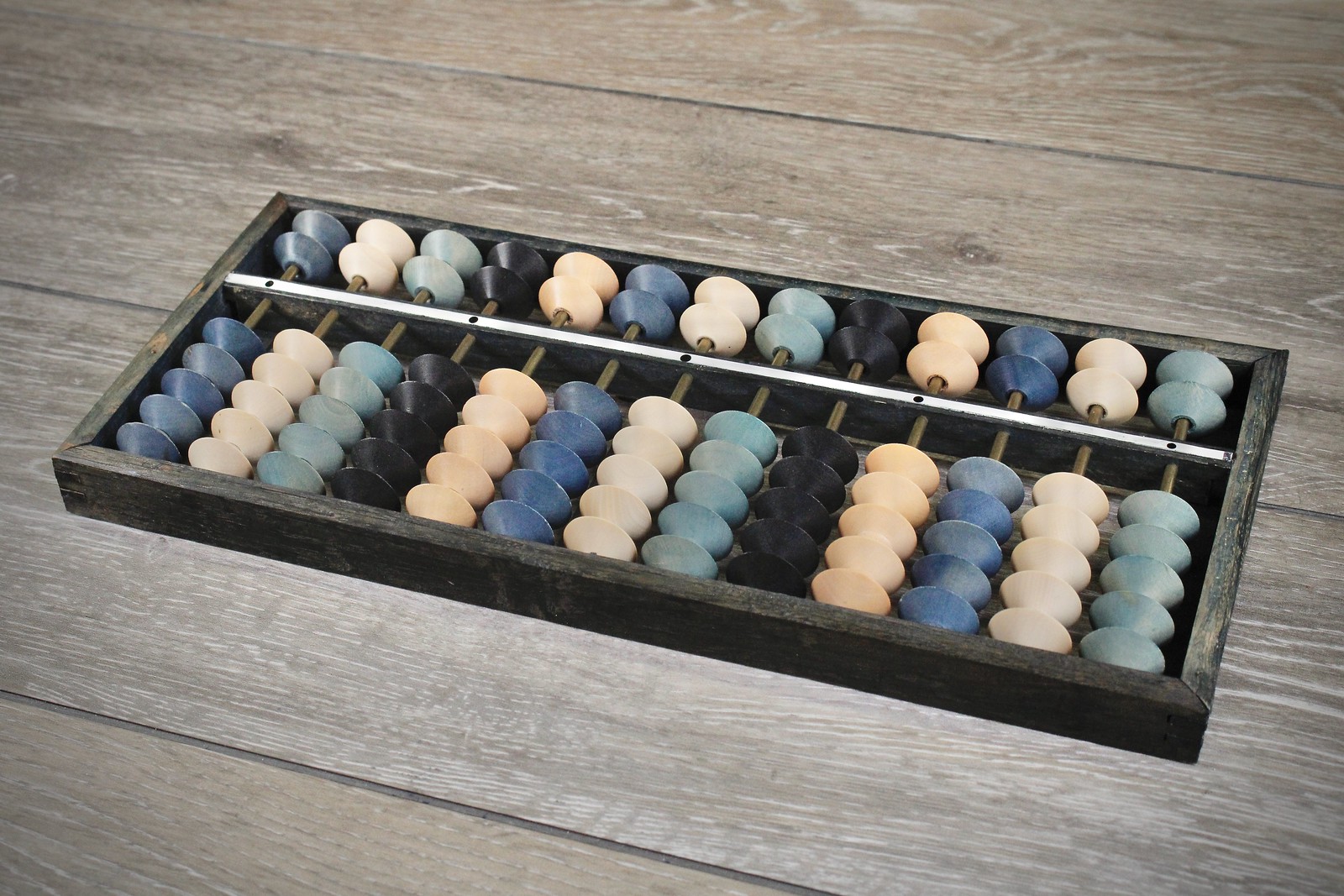One More Abacus


Today's typecast is brought to you by the Optima Super, made in USSR-occupied Germany in the very early 1960s:

This device is of the so-called "2:5" configuration, meaning two beads above the bar and five below. Each bead above the bar has a value of 5 when moved down toward the bar; each bead below the bar has a value of one when moved up toward the bar. This implies each place value can hold values from zero to 15, more than our modern decimal place-value system requires.

The underside of the abacus, showing its Japanese-style construction:

This is the second "hybrid" Chinese/Japanese abacus in my collection with colored beads on metal rods:

The new one is on the left, the old one on the right. The old one has a wooden plate on the bottom, steel rods and a sticker indicating it was made in Japan, whereas the new one has brass rods and lacks the plate. They're both 13 rods, enough for multiplication and division.
Here's an example addition problem to show how the modern 1:4 Japanese soroban requires more abstract thought to operate. First the 1:4 version. The problem is 8 + 7.
 First we enter eight on the soroban, by lowering a five bead and raising three one beads.
First we enter eight on the soroban, by lowering a five bead and raising three one beads. To add seven, this requires performing a "tens complement" problem. We first subtract three, the tens complement of seven
To add seven, this requires performing a "tens complement" problem. We first subtract three, the tens complement of seven Then we raise a single bead on the rod to the left, which has a value of ten. The result is fifteen
Then we raise a single bead on the rod to the left, which has a value of ten. The result is fifteenNow let's do the same problem on the 2:5 abacus, this time we won't be using complementary arithematic, as it wasn't used in ancient times. Instead, when they had too high of a value on each rod, they simply "regrouped" the beads until it made sense.
 We enter eight as usual
We enter eight as usual Next, we enter seven directly on the same rods, no complementary steps required!
Next, we enter seven directly on the same rods, no complementary steps required! Next, we have to "rationalize" the result so they make sense in reading the values. First, the two five-beads are removed and replaced by a single ten-bead on the rod to the left
Next, we have to "rationalize" the result so they make sense in reading the values. First, the two five-beads are removed and replaced by a single ten-bead on the rod to the left Continuing to rationalize the answer, we next take away the five one-beads and replace them with a single five-bead. The answer now easily reads as 15
Continuing to rationalize the answer, we next take away the five one-beads and replace them with a single five-bead. The answer now easily reads as 15This process of rationalizing the result in order to conform to the place value system was used as far back as the ancient Greeks, with their counting board (literally abacus in Greek). In their version, rather than beads on rods they used counters on a board marked with columns for the place values. Multiple numbers were "cast" upon the board, then regrouped and rationalized to form a readable result.

3 Comments:
I've always fount the abacus fascinating. I've never seen one in real life anywhere.
I just noticed as I did not enter my name in the comment that I think yours is the only Blogger blog that does not post comments as anonymous with a Blogger/Gmail ID.
This comment has been removed by the author.
Post a Comment
<< Home